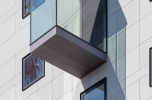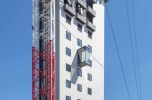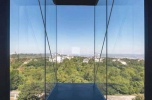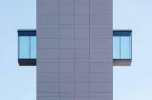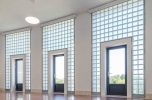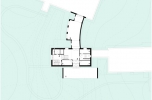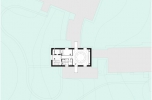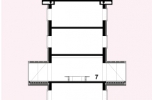Antimetric Symmetry
Széchenyi Transmission Tower, Budapest
Architect: Tamás Dévényi
Text: Zoltán Dragon
Photos: Tamás Bujnovszky
Antimetric symmetry features the facade of the Széchenyi Hill transmission tower. This is how the architect in charge of the remodelling project referred to the positioning, scales and proportions of the double bay window, that is the architectural components that essentially distinguish the original structure from the newly re-interpreted facility, remodelling from the „restoration of historic structures”. Built in 1958, the tower has actually been re-conditioned, as the development of radio technology enriched the functions of the building, whilst its engineering and technical equipment became outdated. Architect Tamás Dévényi, who was in charge of the redesigning stage, ambitioned to restore the original character of the structure, quite often applying solutions featuring the restoration of historic buildings. He restored details and components that survived or could be salvaged to their original glory. In contrast, he reinterpreted those that were destroyed, or the restoration of which was impossible due to financial, technical reasons or because of a change of functions, by using the vocabulary of contemporary architecture. In doing so, he avoided creating contrasts and imitation as well, and he phrased the changed needs of his own era and age.
Architects of the original building (1956–1958): László Székely, István Gergely
Leading architect: Tamás Dévényi – Budapesti Műhely
Fellow architects: Franciska Hutter, Bea Polyák, Viktor Vadász
Interiors: Tamás Dévényi
Structure: László Szőnyi – Geon
HVAC: Gábor Mihály Szigyártó – SMG-Sisu
Electrical engineering: György Kapitor – SMG-Sisu
Fire protection: Áron Kerényi
Garden design: Dániel Kontra – Urbanconcept

